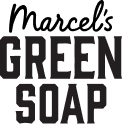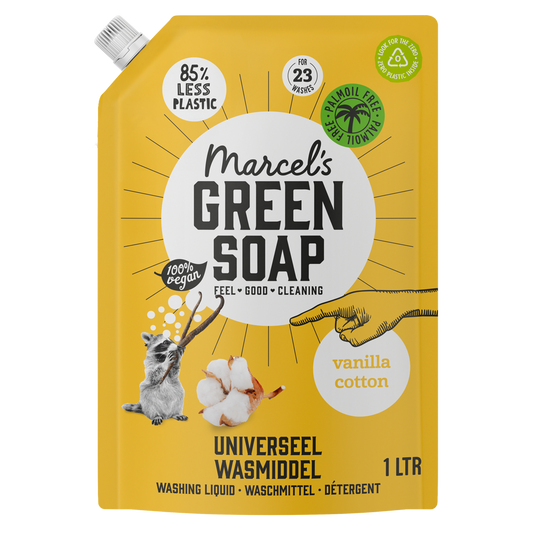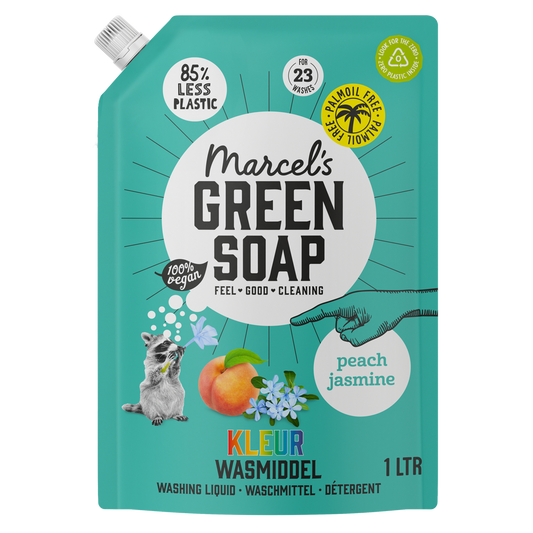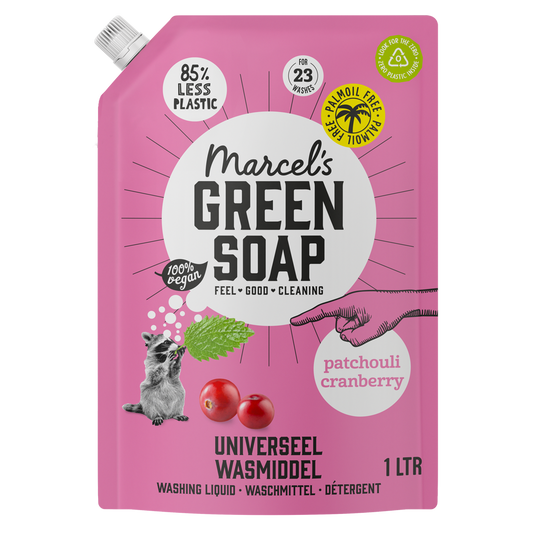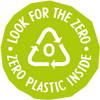"Hey Marcel, why do you use SLS?" A frequently asked question in our mailbox. To cut to the chase: Marcel’s Green Soap never uses SLS (Sodium Lauryl Sulfate), but SLES (Sodium Laureth Sulfate) instead. Let us explain the difference between these sulfates and why we use SLES in some of our products.
What do sulfates do?
Just the mention of "sulfate" may make you think of dry skin. That's been the reputation of this foaming agent in recent years. Sulfates are commonly used in shampoo, soap, detergents, toothpaste, facial cleansers, shaving foam, and more. In short: in anything that foams nicely. This surfactant helps dissolve and remove grease and dirt. Sounds good, right?! But the problem is that sulfates tend to do their job a bit too well, which means that with regular use, they not only dissolve grease and dirt but also strip away the skin's natural protective barrier. This can lead to irritation, especially if you have sensitive skin. SLS (Sodium Lauryl Sulfate) and - especially - SLES (Sodium Laureth Sulfate) are common sulfates found in shampoos and other personal care products. The fact that these abbreviations and names are quite similar can sometimes cause confusion.
What's the difference between SLS and SLES?
Don't worry, we won't give you a complicated chemistry lesson: both SLS (Sodium Lauryl Sulfate) and SLES (Sodium Laureth Sulfate) are surfactants* that help the caring properties of a product work better. These sulfates also have a foaming effect, making it easier to distribute and rinse off shampoo, shaving foam, toothpaste, soap, and other personal care products. While both substances have a cleansing and foaming effect, SLES is much milder for your skin and hair than SLS. As a result, SLS is not as commonly found in personal care products, whereas SLES is. This includes some of Marcel’s Green Soap products.*Surfactants, also known as surface-active agents or surfactants, help dissolve grease and dirt and remove them in water.
As sustainable as possible
At Marcel’s Green Soap, we're always looking for ways to make our products even more sustainable and better without compromising on delightful fragrances and ease of use. Naturally, all our products are microplastic-free, and our range of palm oil-free products is growing. Additionally, all our packaging is made from 100% recycled plastic. But now you might be wondering: why do our products contain sulfates?A small amount of SLES (and not SLS) is used in some of our products. We use this sulfate to make our hand soaps, shampoos, and shower gels foam nicely and enhance their cleansing effect. The SLES variant we use is extra mild – unfortunately, you can't tell by the name on the label. Furthermore, we've added hydrating ingredients like aloe vera and vegetable glycerin to counteract the slightly drying effect. We choose to use sulfate because there is currently no more sustainable and equally effective alternative available. When you replace this (synthetic) substance with a natural ingredient, you might need up to 8 times more raw materials to make the shampoo, soap, or shower gel just as effective. Since sustainability is our top priority, that's not the solution. Additionally, the mild SLES variant we use in small quantities poses no harm to your skin and hair (when used normally).
Psst... Prefer sulfate-free? Our shampoo bars, conditioner bars, and body bars are sulfate-free (and microplastic-free, palm oil-free, and silicone-free).
Sources:
https://waarzitwatin.nl/stoffen/natrium-laureth-sulfaat
https://waarzitwatin.nl/stoffen/natrium-lauryl-sulfaat

